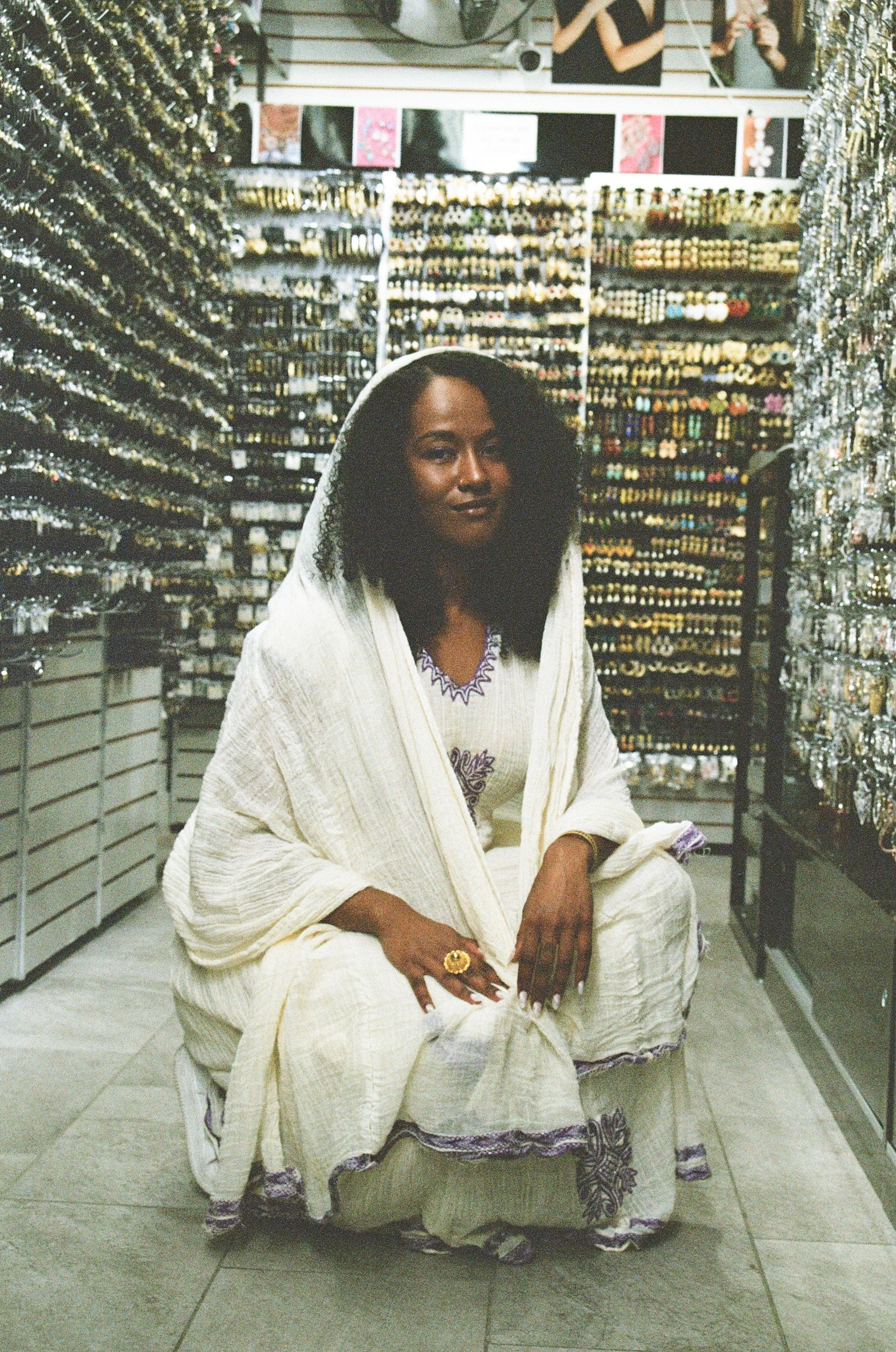About the Artist
Michal is a self-taught Eritrean-American film photographer, visual storyteller, and cultural archivist based in New York City, currently nomadic. Her cinematic, street-style work explores identity, heritage, and human connection, shaped by lived experiences across North America, Africa, Asia, and Europe.
She creates to reveal hidden truths, challenge conventional narratives, and craft work that resonates beyond the moment. Stemming from her own tensions with the Habesha identity, Michal opens conversation for both Eritrean and Ethiopian communities to connect, learn, and build empathy with one another.
Credit @milenatck
Credit @abelkh
I created this project to hold the complexity of being Eritrean without flattening it into a single narrative — and to build a bridge between Eritreans and Ethiopians through story, not silence.
I grew up across cultures, watching how one word — Habesha — can feel both connective and controversial. I wanted to sit with that tension. Document it.
Both sides of my family are Eritrean with roots in and around Asmara. I was raised to be a proud Eritrean, always surrounded by our culture. Born in California, I lived in four U.S. cities by age eight — what I consider "Habesha hotspots" — then five countries across three continents by eighteen. While I was often a minority in these contexts, my Eritrean identity served as an anchor through constant adolescent shifts.
At eight, I moved from Seattle's Eritrean-dominant community to just outside Washington, D.C., the largest Ethiopian diaspora in the world. In an injera shop, an elder Ethiopian man spoke to me in Amharic, the national language of Ethiopia. When I said I don't speak it because I'm Eritrean, it upset him. My family advised using "Habesha" to avoid such interactions in the future.
I didn't understand why calling myself Eritrean was so provocative — these are internationally recognized borders. Eritrea had always been distinct as Midri Bahri, and the state of Eritrea was created through the internationally recognized Treaty of Wuchale by King Menelik II of Ethiopia. Yet many Eritreans felt the same tension, and here we are, often using the word. Instead of living with this discomfort, I wanted to express it and change the conversation.
The ongoing advocacy of the Oromo people — Ethiopia's largest ethnic group — has been inspiring and served as a driving undercurrent for my interest in this conversation. Learning that they don't identify as Habesha despite Ethiopians constantly pushing the identity on me revealed the complexity I wanted to explore.
"We are all the same," people say. In many ways, we are — neighboring African countries with shared ethnic groups, religions, and languages, like much of the continent. Yet we are different, the way any people vary across geographies. Our distinct appearance mirrors our location at the crossroads of Africa, Europe, and Asia — a region that welcomed Western travelers and Eastern traders. In isolated highlands, ancestors of Semitic peoples mixed, settled, and built powerful civilizations.
Habesha is used colloquially by Eritreans and Ethiopians as quick acknowledgment while avoiding ethnic differences, but to me, it often feels like erasing my Eritrean identity. Different people have their own qualms — whether they're from non-Semitic groups like Oromo or Kunama, practice non-Orthodox religions, or simply prefer their national identity. Even my family was amused by my discoveries, because there's no consensus on this word's meaning.
Words have power — they build the strongest alliances and incite unspeakable terror. This project reflects that power, showing how words shape the realities we create for ourselves. This project is for everyone who's had to explain who they are, whose identity was reduced to a single story, whose story was left out.





